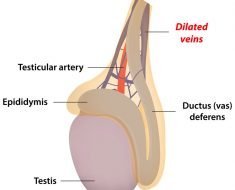Being misdiagnosed is even more of a problem then we thought. According to an alarming new study, misdiagnosis is to blame in roughly one-third (34%) of malpractice cases where death or permanent disability has occurred. Misdiagnosis is not only the most common medical error, but the most costly and most dangerous, the study also found.
Researchers from Johns Hopkins University analyzed more than 55,000 malpractice claims to determine patterns of misdiagnosis. Their findings, published in the journal Diagnosis, show that nearly three quarters (74.1%) of the most harmful misdiagnoses can be attributed to just three conditions: cancer (37.8%), vascular events, or problems relating to blood vessels (22.8%), and infection (13.5%).
"It is not just inconvenient to have a wrong or delayed diagnosis. For many patients, misdiagnosis causes severe harm and expense, and in the worst cases, death," lead author David Newman-Toker, MD, PhD, professor of neurology at Johns Hopkins University School of Medicine in Baltimore, said in a statement. "This study shows us where to focus to start making a difference for patients. It tells us that tackling diagnosis in these three specific disease areas could have a major impact on reducing misdiagnosis-related harms."
Even scarier, more than half of the misdiagnosis cases analyzed in this study happened to women. But this gender imbalance isn't new information. Women are 50% more likely to be misdiagnosed after a heart attack than men, a UK study concluded. They're also 33% more likely to receive a wrong diagnosis after a stroke. More recently, a study from Yale University in January found that young boys' pain is taken more seriously than pain felt by girls—and it's not hard to see the connection between pain not taken seriously and misdiagnosis.
Research like this is why Health launched an article series called Misdiagnosed, which features real women who had to fight (sometimes for years) to get their symptoms and health concerns taken seriously and be properly diagnosed.
A press release by the Society to Improve Diagnosis in Medicine, a nonprofit organization that funded the Johns Hopkins study, stated that this analysis provides additional context for a 2015 National Academy of Medicine report that found diagnostic errors result in up to 80,000 deaths annually in US hospitals.
The research stresses that the blame doesn't fall solely on physicians, nor is it only their responsibility to fix the problem. Progress had to be made through a system-wide effort that includes the involvement of patients and their families, among others changes.
Source: Read Full Article





